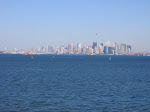I was of the generation that grew up inside a shopping mall. This enclosed building was Mecca for a suburban teenager. The first mall was built in the late 70's in my Philadelphia suburban town, the new playground for me and my friends. The arcade and pizza shop was where we would congregate on Saturdays. Gaggles of girls would stroll up and down, gossiping, browsing, and trying to get the attention of their male counterparts, also strolling in packs. Orange Julius was as familiar as the Champs Elysee bakery where my mom would buy my croissants. This mall would soon be eclipsed by the newer version in another town where trendier stores like Benetton would draw throngs of suburban teens.
It seems this staple of our culture is facing a slow death all across the country. This phenomenon that had completely reshaped our culture in terms of how, and where, we consume is now becoming as obsolete as the plastic furniture covers, a staple of 70's homes.
This American phenomenon was created by Victor Gruen, a Jewish bohemian. He started designing shops for fellow immigrants in New York after failing in cabaret theater. By the 40's, department stores were moving to the suburbs. Commissioned to build a shopping center in Southdale in 1956, Gruen threw a roof over the structure and installed an air conditioning system to keep the temperature at a constant 75 degrees--perpetual springtime.
By the 80's the mall was as much a part of American life as Ford trucks. We saw food chains, created for malls, crop up. Can anyone say Panda Express or Cinnabon without immediately conjuring up escalators, canned music, and Victoria's Secret? We saw movies like "Fast Times at Ridgemont High" and "Valley Girl" epitomize mall culture for the generation of mall goers.
By the 90's malls were in dire straits. The problem was in the sheer number of malls cropping up, competing for the same shoppers in their suburban haven. Another problem was the changing face of suburbia itself. The sedate life of subdivisions, soccer moms, and bored kids was evolving as immigrants started to arrive, and in some areas, in droves. The 90's also saw the resurgence of cities drawing hip white suburbanites to move downtown, leaving behind suburban life. So, this planned shopping community, created to keep out diversity, was now doing the exact opposite as communities started to change. It seems the rapid death of malls has spawned a new hobby: amateur shopping-mall history, namely on websites. It is a strange country indeed.
So, what's in store for American shopping culture? Rick Caruso, little known outside Los Angeles, is doing his part to reshape, redefine, the old mall. His creation, which sits on the corner of Fairfax and Third, otherwise known as The Grove, has created a faux-city behind walls where women, mostly white, feel safe and stylish enough to shop to their heart's content. Yes, there is something a bit Vegas like about the whole place, especially the fountain that sprays in tune to various songs like Kool and the Gang's, "Celebration". There is something sinister, even, about this fake city with its strange trolley that runs the length of the place. But this new outdoor shopping mecca with its minuscule green space, which people use as a park, is redefining the way we shop, yet again. Whether the success of the Grove will translate into other suburban towns tearing off the roof on their indoor shopping centers remains to be seen. Really, who in their right mind would walk around in an uncovered building in Minnesota during the winter months?
And even the Grove, during a rainy day, is quite empty as people head to the enclosed safety of the Beverly Center. But perhaps that is more a result of the thin-bloodedness of Angelenos, whose very existence is shattered if a few rain drops fall from the heavens above. Perhaps Minnesotans, quite at home with inclement weather, would happily stuff themselves inside their down jackets to do a bit of shopping. New Yorkers certainly have no trouble shopping in any type of weather. We only need to head down a clogged 5th Avenue, the largest outdoor mall in America, and see how weather really plays no part when people are intent on spending.
Whatever the outcome, the latest casualty of the changing face of American life, mainly in the suburbs, will continue to be felt on all levels. Those who've remained in suburban towns, perhaps their salaries not allowing them to move into cities, will have to face a reality where the Orange Julius will be replaced a Taqueria, or worse, a butcher shop that sells exotic animal parts. It's no surprise that immigration will be the biggest issue during this Presidential election. Global warming be damned! Suburban families are pissed that their towns are a changing.
Again, this country will reinvent how we shop as another 'thing' emerges as the next best thing.
Tuesday, January 8, 2008
Subscribe to:
Post Comments (Atom)




No comments:
Post a Comment